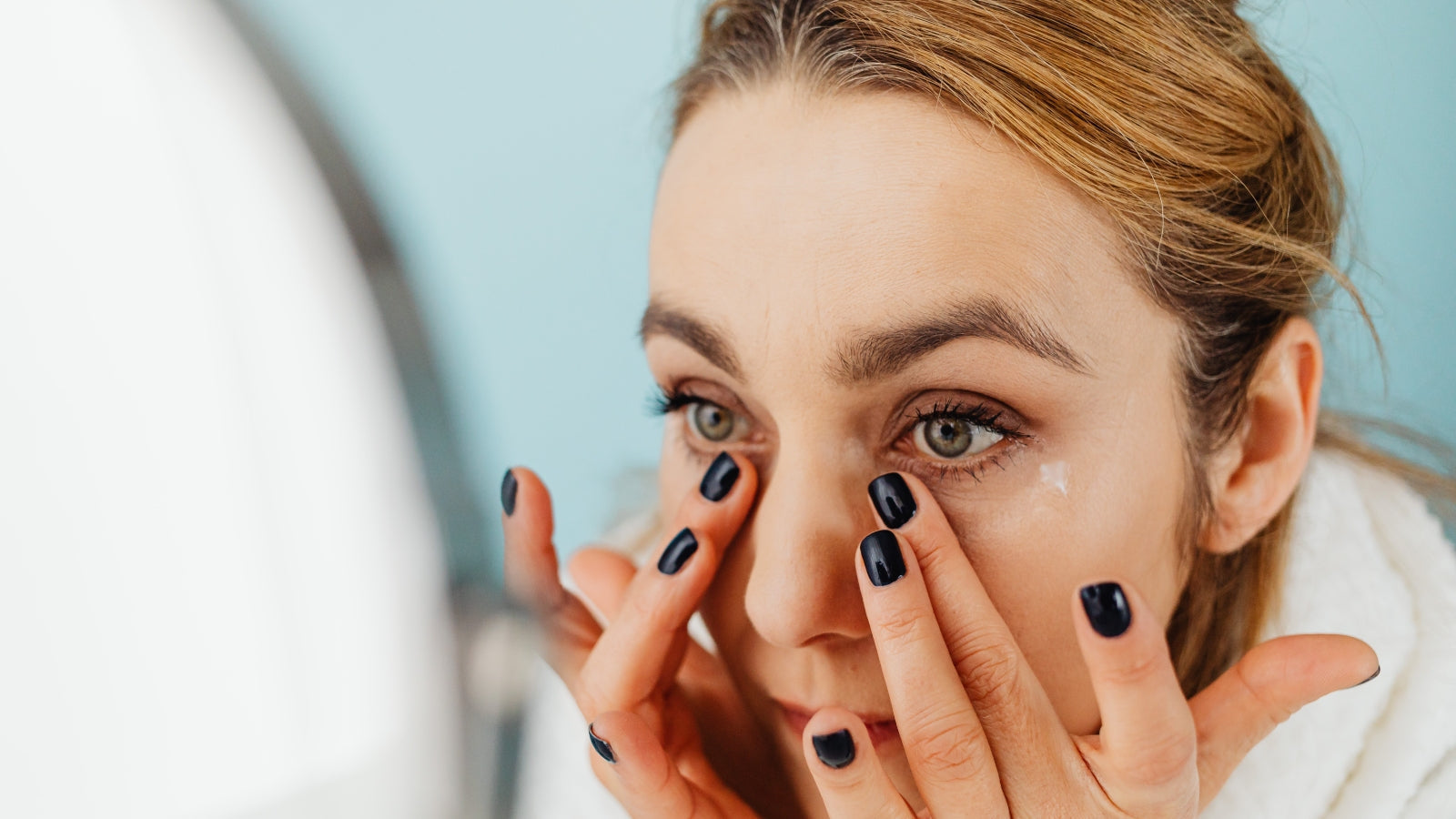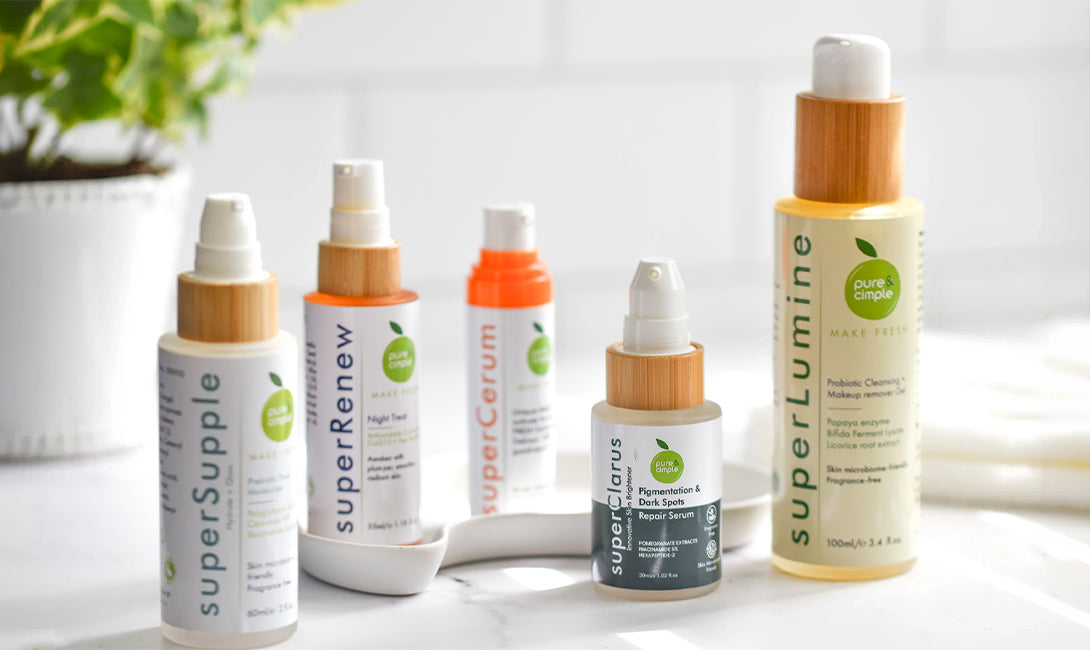In our journey toward clean beauty, we've become increasingly savvy about identifying and avoiding certain ingredients: parabens, sulfates, and silicones often top the "avoid" lists. But there's one ingredient category that frequently flies under the radar despite potentially being more problematic than all of these—fragrance.
What Exactly Is Fragrance in Skincare?
When you see "fragrance," "parfum," or "aroma" listed on your skincare products, you're looking at a complex mixture of chemicals designed to create a pleasant scent. These can be synthetic compounds or natural essential oils. Either way, they serve no skin benefit—their sole purpose is to make products smell appealing.
What many consumers don't realize is that "fragrance" or "parfum" on an ingredient list isn't just one ingredient but potentially dozens or even hundreds of undisclosed chemicals. Due to trade secret protections, companies aren't required to disclose the specific components that make up their fragrances. This lack of transparency means you could be applying numerous potential irritants without even knowing it.

How skin reacts to fragrance?
Fragrances in skincare products create their signature scents through volatile reactions. These same reactions that release pleasant aromas can trigger irritation and sensitivity in your skin. Research consistently shows that fragrances are among the most common causes of skin sensitivities and allergic reactions in cosmetic products.
This sensitivity applies to ALL skin types—not just those with already sensitive or reactive skin.
For mature skin, which naturally becomes more delicate and reactive after 40, fragrance presents an even greater risk. As estrogen levels decline during perimenopause and menopause, the skin's barrier function weakens, making it more susceptible to irritants.
Is fragrance bad for your skin?

The American Academy of Dermatology has identified fragrance as the leading cause of contact dermatitis from cosmetic products. Up to 35% of people report adverse reactions ranging from mild irritation to severe allergic responses. These reactions can manifest as:
- Redness and inflammation
- Itching and burning sensations
- Rashes and hives
- Increased sensitivity to other ingredients
- Exacerbation of existing conditions like rosacea and eczema
Studies by the Environmental Working Group found that nearly 75% of fragranced products contain phthalates—chemicals associated with hormone disruption and reproductive issues. This is from just one class of the approximately 4,000 possible chemicals that could be in your synthetic fragrance.
"What many people don't realize is that fragrance can cause damage at the cellular level, even when you don't see immediate visible reactions like redness or irritation. This invisible inflammation accumulates over time, potentially accelerating the aging process." - Dr. Christine J. Ko, MD, Professor of Dermatology, Yale University
The Silent Damage: Long-Term Effects
Even if you don't experience immediate visible reactions to fragranced skincare, these ingredients can still cause significant damage beneath the surface. Fragrance components can trigger inflammation at the cellular level—what dermatologists call "silent inflammation."
This chronic, low-grade inflammation damages your skin's protective barrier over time, leading to:
- Accelerated collagen breakdown - undermining your skin's structural support
- Increased transepidermal water loss - causing chronic dehydration
- Compromised barrier function - making skin more vulnerable to environmental damage
- Heightened reactivity - creating a cycle of increased sensitivity
Think of it like sun damage—you might not see the effects immediately, but years later, the cumulative damage becomes visible through premature aging, pigmentation issues, and increased sensitivity.
Why is fragrance in your skincare then?

Understanding the adverse impacts of fragrances on health, you would possibly wonder, with all the proven negative effects of fragrances - why would brands still include these in their products?
1. Sensory Marketing
Humans form strong emotional connections to scents. Skincare companies leverage this by creating signature fragrances that become part of their brand identity and influence purchasing decisions. These pleasant scents create positive associations that keep customers coming back.
2. Masking Base Formulations
Many raw ingredients essential for skincare benefits don't smell particularly pleasant on their own. Alpha hydroxy acids, certain peptides, and various botanicals often have natural odors that consumers might find off-putting. Fragrance helps mask these functional but less appealing scents.
3. Disguising Product Degradation
An often-overlooked reason for fragrance inclusion is to hide the natural degradation of products over time. As natural ingredients break down with exposure to air and light, their scents can change—especially in jar packaging where the product is repeatedly exposed. Fragrances help mask these changes in smell that might otherwise alert consumers to product deterioration.
At Pure & Cimple, we've addressed this issue differently—by using airless pump packaging that minimizes product exposure to air and light, helping preserve ingredient integrity naturally without needing masking fragrances.
Essential Oils: Natural But Not Necessarily Safer
Many brands have shifted to advertising "no synthetic fragrances" while still including essential oils. While these are natural, they can be equally—if not more—irritating to sensitive skin.
Essential oils contain numerous compounds that can trigger reactions. For instance:
- Citrus oils (orange, lemon, bergamot) can cause photosensitivity, making your skin more vulnerable to sun damage
- Lavender and tea tree oils, while popular for their purported benefits, are among the most common triggers of allergic contact dermatitis
- Mint oils like peppermint can create a cooling sensation that actually indicates irritation
Who Is Most Vulnerable to Fragrance Reactions?
While everyone should be cautious about fragranced skincare, certain groups are particularly susceptible to adverse reactions:
- Women over 40 experiencing hormonal changes that thin and sensitize the skin
- People with existing skin conditions like rosacea, eczema, or psoriasis
- Those with asthma or respiratory sensitivities who may experience both skin and breathing reactions
- Anyone with a compromised skin barrier from over-exfoliation or harsh treatments
- Individuals with multiple chemical sensitivities who react to a wide range of substances
Making the Switch to Fragrance-Free Skincare
Transitioning to truly fragrance-free products can dramatically improve skin health, especially if you've been experiencing unexplained sensitivity, redness, or reactivity. Here's how to navigate the switch effectively:
Read Labels Carefully
Look beyond "unscented," which often means additional masking fragrances have been added to create a neutral smell. Instead, look for products explicitly labeled "fragrance-free" and double-check ingredient lists for hidden fragrance components like:
- Parfum/fragrance
- Essential oils (listed individually)
- Geraniol, limonene, linalool, citronellol (fragrance components often listed separately)
- Natural fragrance or aroma
Make Smarter Skincare Choices
Eliminating fragrance creates the perfect opportunity to make smarter skincare decisions. Choose products with purposeful ingredients that deliver targeted results without unnecessary additives. When each component serves a specific function, your skin receives exactly what it needs—nothing more, nothing less. This intelligent approach reduces irritants while making your routine more effective and your results more predictable.

Prioritize Barrier Repair
If you've been using fragranced products for years, your skin barrier may need support to recover. Look for products with:
- Ceramides to restore barrier function
- Niacinamide to calm inflammation
- Hyaluronic acid for non-irritating hydration
- Prebiotics to support healthy skin microbiome
Expect an Adjustment Period
Your skin may go through an adjustment period when switching to fragrance-free formulations. Some people experience a brief "detox" phase as their skin recalibrates without the masking effects of fragrance. Within 2-4 weeks, most people notice significant improvements in clarity, reactivity, and overall skin comfort.
The Pure & Cimple Approach: Embracing Fragrance-Free Formulations
At Pure & Cimple, we understand the delicate nature of skin, especially as we age. That's why all our products are completely free from fragrances and essential oils. The subtle, natural scent of our products comes solely from the functional ingredients themselves, offering a gentle experience even for the most sensitive skin.
Our commitment to fragrance-free formulation goes hand-in-hand with our other core principles:
- Minimalist formulations with 12 or fewer key ingredients
- Focus on microbiome-friendly ingredients that support your skin's natural balance
- Ayurvedic wisdom paired with biomimetic science for gentle effectiveness
- Airless packaging that maintains ingredient integrity without needing masking scents
Your Skin Deserves Better Than Fragrance
The skincare industry has conditioned us to expect and even desire scented products. Marketing creates the perception that fragrance equates to luxury or effectiveness. In reality, the most sophisticated and skin-respectful approach is to formulate without fragrance entirely.
Your skin is remarkably intelligent and resilient when given the proper support. By eliminating unnecessary irritants like fragrance, you allow your skin's natural healing and regenerative processes to function optimally.








